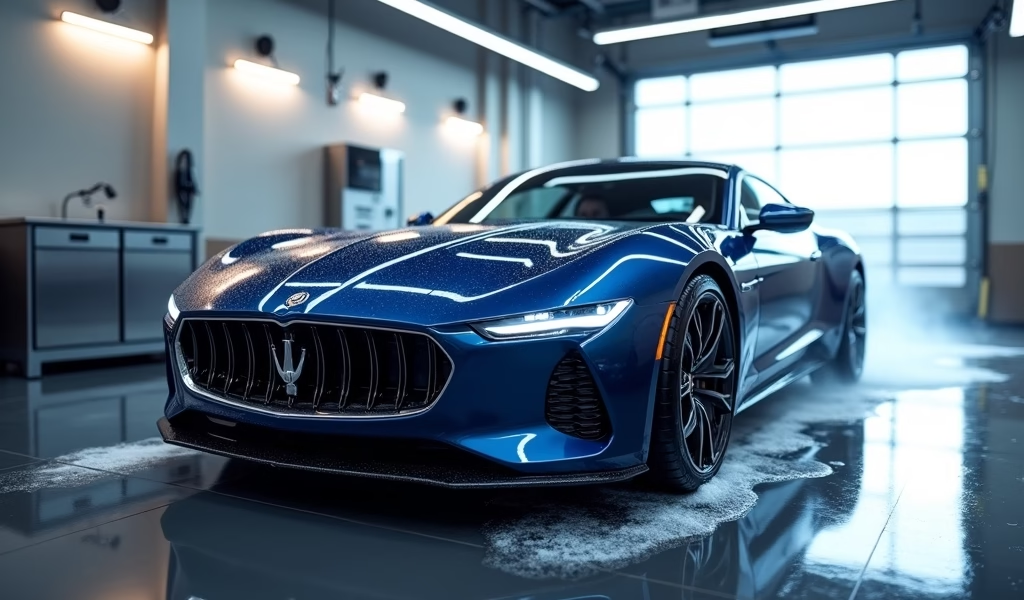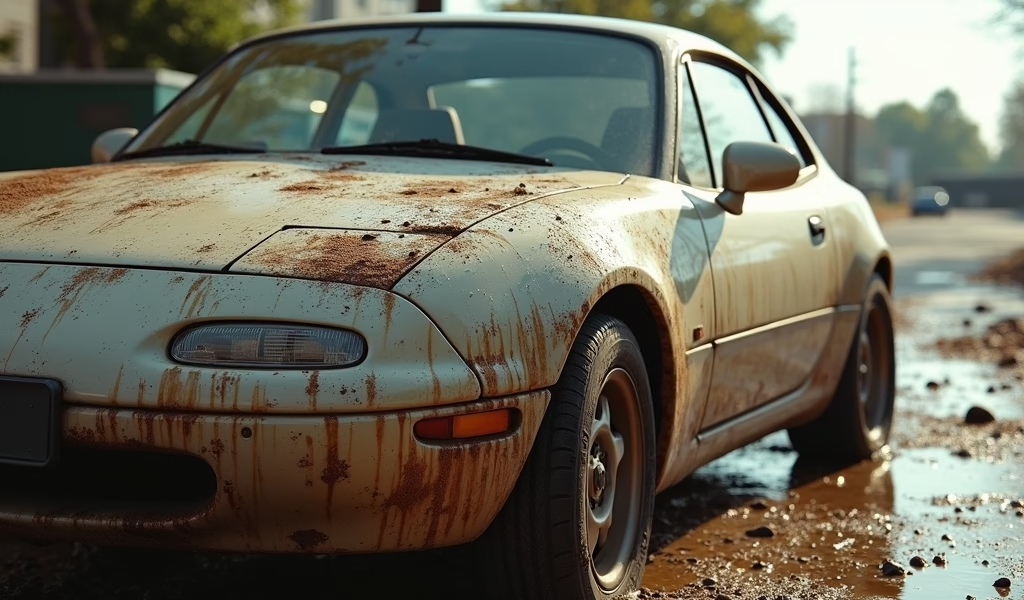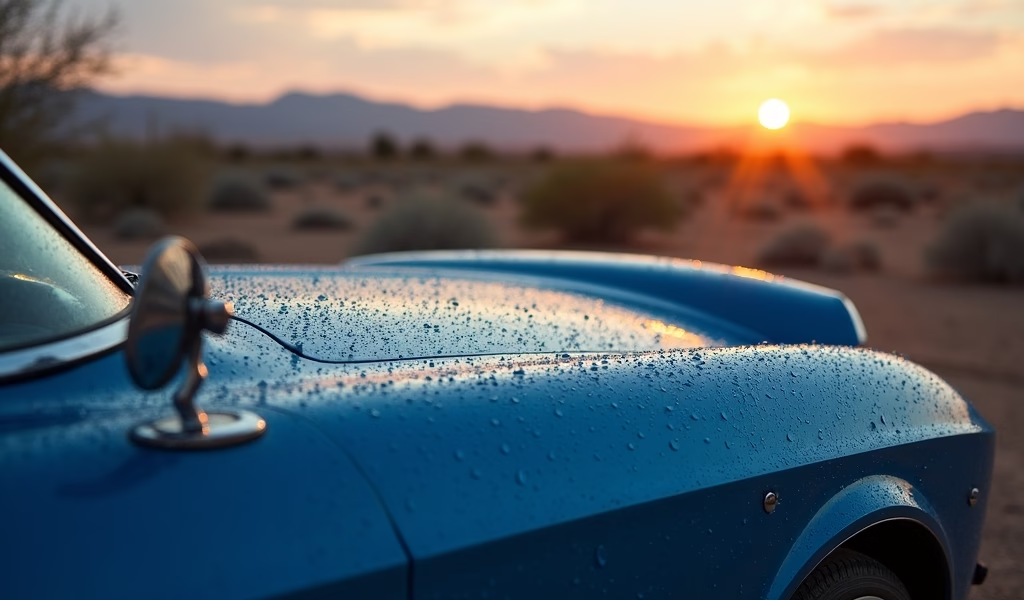Overview
This guide provides seven essential car washing tips specifically tailored for Albuquerque’s harsh desert climate, including choosing the right wash type, optimal frequency, pre-wash techniques, quality products, proper drying, protective treatments, and professional detailing services. The article emphasizes how Albuquerque’s unique environmental challenges—intense UV exposure, temperature fluctuations, dust storms, and mineral-heavy water—require specialized car care approaches to maintain vehicle appearance and value.
Table of Contents
- Why Your Car Needs Regular Washing in Albuquerque
- How Albuquerque’s Unique Climate Affects Your Vehicle
- Tip 1: Choose the Right Type of Car Wash
- Tip 2: Optimal Washing Frequency for Albuquerque Conditions
- Tip 3: Pre-Wash Considerations for Maximum Effectiveness
- Tip 4: Selecting Quality Cleaning Products
- Tip 5: Proper Drying Techniques to Prevent Water Spots
- Tip 6: Protecting Your Car After Washing
- Tip 7: Professional Detailing Services Worth the Investment
- Conclusion: Maintaining Your Vehicle’s Appearance and Value
- Frequently Asked Questions
Why Your Car Needs Regular Washing in Albuquerque
Finding the best Albuquerque car wash options isn’t just about keeping your vehicle looking shiny – it’s an essential aspect of proper maintenance in our unique desert environment. As a professional with over 15 years in automotive care, I’ve seen firsthand how our city’s specific conditions can take a toll on vehicles. The combination of dust, sun exposure, and seasonal weather patterns creates challenges that require targeted washing approaches.
Albuquerque drivers face unique challenges that make regular car washing more than just a cosmetic concern. Our high desert environment introduces contaminants like fine dust, pollen, and road salt during winter months that can gradually damage your paint and undercarriage. Finding quality car wash services or developing effective DIY techniques tailored to our local conditions can significantly extend your vehicle’s lifespan and appearance.
In this comprehensive guide, I’ll share seven proven tips for the best Albuquerque car wash practices that address our specific regional concerns. These recommendations come from years of experience working with local vehicles and understanding what truly works for cars in the Land of Enchantment. Whether you’re a long-time resident or new to our beautiful city, these strategies will help protect your investment while keeping your ride looking its best.
How Albuquerque’s Unique Climate Affects Your Vehicle
Albuquerque sits at an elevation of about 5,312 feet in a high desert environment, creating specific challenges for vehicle maintenance that many car owners underestimate. Our city experiences over 300 days of sunshine annually, which means relentless UV exposure that accelerates paint oxidation and interior fading. This intense sunlight breaks down protective waxes and sealants much faster than in more moderate climates, making regular washing and protection critical.
The dramatic temperature swings we experience – from freezing winter nights to scorching summer days where asphalt temperatures can exceed 150°F – put tremendous stress on your vehicle’s exterior. These fluctuations cause expansion and contraction of materials, which can worsen existing paint damage and lead to premature aging of rubber seals and plastic components. Similar to Las Vegas car washing challenges, our low humidity also intensifies the effects of UV damage.
Seasonal challenges include our notorious spring winds that blanket vehicles in a fine layer of alkaline dust. This dust is more than just unsightly – it’s abrasive and can etch into clear coats when left unwashed. During our brief but intense monsoon season, mineral-heavy rainwater can leave stubborn water spots if not promptly addressed. Finally, winter brings road salt and de-icing chemicals that accelerate corrosion on undercarriages and wheel wells if not regularly rinsed away.
According to a study on environmental effects on automotive coatings, vehicles in desert climates like ours can experience up to 60% faster degradation of protective finishes compared to more temperate regions. This accelerated wear makes following proper car washing techniques particularly important for Albuquerque residents who want to maintain their vehicle’s value and appearance.

Tip 1: Choose the Right Type of Car Wash
When it comes to finding the best Albuquerque car wash, you have several options, each with distinct advantages. Touchless automatic washes use high-pressure water and strong detergents without physical contact, making them safer for paint but potentially less effective on heavily soiled vehicles. Soft-touch automatics use cloth or foam materials to physically clean your car, providing better cleaning but with a slightly higher risk of microscratches if maintenance is poor.
Self-service bays give you complete control over the washing process and are excellent for targeting specific problem areas like wheel wells where Albuquerque’s dust tends to accumulate. These stations typically offer high-pressure rinses that effectively remove desert grit from undercarriages – a crucial benefit in our region. However, they require more time and physical effort than automatic options.
For the absolute best results, professional hand washing services offer the most thorough and paint-safe option. The best detailers in Albuquerque use two-bucket washing methods with grit guards, high-quality microfiber materials, and pH-neutral soaps specifically formulated for our hard water conditions. This approach minimizes swirl marks while providing a level of attention that machines simply can’t match.
When evaluating any car wash facility, look for updated equipment, water recycling systems (important in our drought-prone region), and proper maintenance practices. The best establishments will have water filtration systems that prevent mineral deposits – a common issue with Albuquerque’s water supply. Many local car enthusiasts prefer locations that offer spot-free rinse options using deionized water, which helps prevent the stubborn water spots so common in our dry climate.
Tip 2: Optimal Washing Frequency for Albuquerque Conditions
In Albuquerque’s unique climate, determining how often to wash your vehicle requires balancing several environmental factors. During our dusty spring season when winds regularly gust over 40 mph, weekly washing becomes necessary as fine alkaline particles accumulate rapidly and can damage paint when left untreated. Similarly, during winter months when roads are treated with salt and de-icing chemicals, frequent undercarriage rinses prevent corrosive buildup.
Summer presents its own challenges, with monsoon season bringing brief but intense rainstorms that deposit mineral-heavy water on vehicles. These droplets act as magnifying glasses under our intense sun, potentially etching spots into paint surfaces. A good rule of thumb is to wash within 48 hours of any rain event during summer months, focusing particularly on horizontal surfaces where water tends to pool and evaporate.
For everyday driving conditions outside these extreme periods, most vehicles benefit from washing every 10-14 days in Albuquerque. This frequency helps remove accumulated dust and pollutants before they can bond to surfaces while preventing excessive water usage – an important consideration in our water-conscious region. Regular washing on this schedule helps maintain protective wax coatings, which break down more quickly in our high-UV environment.
Vehicle storage conditions also affect washing frequency. Cars kept in garages typically require less frequent washing than those parked outdoors, which face constant exposure to UV rays and environmental contaminants. If you park under trees – especially our abundant cottonwoods during their spring “snowfall” period – you may need more frequent washing to prevent sap and organic matter from damaging your finish. Similar challenges exist for Phoenix residents, where desert conditions create comparable maintenance needs.
Tip 3: Pre-Wash Considerations for Maximum Effectiveness
Before diving into the main wash, proper preparation makes a tremendous difference in the final results, especially given Albuquerque’s unique environmental challenges. Always begin by rinsing your entire vehicle thoroughly with clean water to remove loose surface contaminants. This initial step prevents dragging abrasive particles across your paint during the washing process – particularly important given our region’s fine dust that can cause microscratches.
For vehicles with heavy soil buildup – common after dust storms or off-road adventures in nearby areas like the Sandia foothills – consider applying a pre-wash foam or spray. These products dwell on surfaces for several minutes, chemically loosening stubborn dirt and creating a slick barrier that helps particles slide off rather than scratch during washing. Look for pH-neutral formulas specially designed for high-mineral content water like we have in Albuquerque.
Pay special attention to lower panels, wheel wells, and front bumpers where road grime and insects accumulate. These areas often benefit from targeted pre-treatment with specialized cleaners before the main wash begins. Bug and tar removers can be particularly helpful during summer months when insect activity increases along the Rio Grande corridor and surrounding agricultural areas.
Timing your wash strategically also improves results. Avoid washing in direct sunlight whenever possible, as Albuquerque’s intense UV exposure can cause soap and water to dry prematurely, leaving stubborn spots and streaks. Early morning or evening washing provides better results, and some automotive experts recommend washing when surface temperatures are below 80°F for optimal cleaning product performance.
Tip 4: Selecting Quality Cleaning Products
The harsh Albuquerque environment demands thoughtful product selection to effectively clean without damaging your vehicle’s surfaces. Always choose car wash soaps specifically formulated for automotive use rather than household detergents, which can strip protective waxes and damage rubber seals – particularly problematic in our dry climate where rubber components already face accelerated aging from UV exposure. Look for pH-balanced formulations that clean effectively without being overly harsh.
Water quality considerations are especially important in Albuquerque, where our water contains high mineral content. Using products designed to work with hard water helps prevent spotting and streaking. Some local detailers recommend adding water softeners to their wash solutions or using rainwater collection systems for final rinses to avoid mineral deposits altogether – an innovative approach well-suited to our region.
For tackling the specific contaminants common to our area, specialized products make a significant difference. Clay bars are particularly valuable for removing embedded industrial fallout and brake dust that becomes baked onto surfaces in our hot climate. Iron removers help eliminate the tiny metal particles that embed in paint from railway activity and construction sites around the expanding Albuquerque metro area.
Microfiber washing mitts and drying towels have revolutionized safe washing practices and are essential for Albuquerque’s conditions. These advanced materials trap particles away from paint surfaces rather than grinding them in. Invest in high-quality microfiber with high GSM (grams per square meter) ratings for maximum absorbency and safety. Regularly laundering these materials without fabric softeners maintains their effectiveness and prevents cross-contamination between washes.

Tip 5: Proper Drying Techniques to Prevent Water Spots
In Albuquerque’s arid climate, proper drying techniques are arguably even more important than washing methods. Our low humidity and high temperatures cause water to evaporate quickly, leaving behind mineral deposits that create stubborn water spots. These spots aren’t just unsightly – they can actually etch into clear coat finishes when exposed to our intense sunlight, causing permanent damage that requires professional correction.
The most effective drying approach uses large, clean microfiber drying towels with a minimum of 350 GSM (grams per square meter) thickness. Begin at the top of your vehicle and work downward, using light dragging motions rather than circular rubbing. Frequently refold your towel to present a clean surface, preventing any grit from being dragged across your paint. For larger vehicles, keep multiple towels on hand to ensure you’re always working with sufficient absorbency.
Water blades and air-drying methods have gained popularity among Albuquerque car enthusiasts. Silicon water blades can quickly remove standing water before towel drying, reducing the total amount of towel contact needed. For those with access to equipment, leaf blowers or specialized automotive dryers force water from crevices and panel gaps where it might otherwise linger and cause spotting or corrosion over time.
For the ultimate spot-free finish in our challenging conditions, consider a final wipe with quick detailer spray compatible with your vehicle’s existing protection. These products contain polymers that enhance shine while displacing any remaining water droplets. Many local detailing professionals like those in nearby El Paso have adopted this final step as standard practice when dealing with the challenges of desert climate car care.
Tip 6: Protecting Your Car After Washing
After achieving a clean exterior, applying protective products becomes essential to defend against Albuquerque’s harsh elements. Traditional carnauba waxes offer warm, deep gloss and moderate protection but typically last only 4-6 weeks in our intense UV conditions. For longer-lasting protection, synthetic polymer sealants provide 3-6 months of durability with excellent water beading properties that help prevent mineral deposits from our hard water.
Ceramic coatings represent the pinnacle of protection technology and are particularly well-suited to Albuquerque’s climate challenges. These silicon dioxide-based products bond at the molecular level with paint surfaces, creating a hydrophobic barrier that repels water, resists UV damage, and makes subsequent cleaning easier. Professional-grade ceramic coatings can provide 2-5 years of protection, while consumer versions typically offer 6-12 months of durability.
Don’t overlook often-neglected surfaces when applying protection. Treat rubber and plastic trim with dedicated protectants containing UV inhibitors to prevent the cracking and fading so common in our southwest sun. Wheels benefit from specialized wheel sealants that resist brake dust accumulation and make future cleaning easier. Even glass surfaces should receive treatment with glass-specific repellents that improve visibility during our brief but intense monsoon rain events.
Develop a regular maintenance routine between full washes using detail sprays compatible with your primary protection. These products clean light dust – a constant presence in Albuquerque – while reinforcing your existing protective layer. According to automotive industry statistics, vehicles with well-maintained exteriors typically retain 10-15% more value at trade-in time, making these protective measures a sound investment in our region where vehicles otherwise age prematurely from environmental exposure.
Tip 7: Professional Detailing Services Worth the Investment
While regular maintenance washing forms the foundation of vehicle care, periodic professional detailing provides benefits that DIY methods simply can’t match. Albuquerque’s premier detailing services offer paint correction treatments that remove the fine scratches and oxidation resulting from our harsh environment. These professional-grade machine polishing services restore clarity and depth to paint that has been dulled by constant sun exposure and wind-blown particulates.
Professional-only ceramic coating applications represent another service worth considering in our challenging climate. Unlike over-the-counter products, professional-grade ceramic coatings require extensive surface preparation and controlled application environments. The resulting protection can last 3-5 years with proper maintenance – significantly outperforming consumer products in our high-UV, high-dust conditions.
Interior detailing becomes particularly important in Albuquerque, where solar heat gain through windows can cause interior temperatures to reach 180°F during summer months. Professional services use specialized equipment to extract deeply embedded dust from ventilation systems and upholstery while applying commercial-grade UV protectants to prevent dashboard cracking and upholstery fading – common problems for vehicles in our region.
Most quality detailers in Albuquerque offer tiered service packages to fit different budgets and needs. Consider scheduling a full professional detail annually, with maintenance services quarterly to address our seasonal challenges – spring dust, summer heat, monsoon water spotting, and winter road treatments. This structured approach to vehicle care maximizes your investment while ensuring continuous protection against our unique environmental stressors.
Conclusion: Maintaining Your Vehicle’s Appearance and Value
Finding and utilizing the best Albuquerque car wash approaches isn’t just about aesthetics – it’s about preserving your vehicle’s value in a challenging environment. By understanding our region’s unique conditions and implementing the seven proven tips outlined above, you can significantly extend your vehicle’s appearance and structural integrity. Regular, proper washing removes harmful contaminants before they can cause permanent damage, while appropriate protection creates a crucial barrier against our relentless sun and environmental challenges.
Remember that consistency matters more than perfection in your car care routine. Establishing regular washing habits tailored to Albuquerque’s seasonal conditions will yield better results than occasional intensive detailing sessions. Pay particular attention to undercarriage cleaning during winter months and prompt washing after dust storms or rain events to prevent the unique damage these conditions can cause.
Whether you choose professional services or develop your own DIY regimen, investing in quality products specifically chosen for our high desert environment will pay dividends in maintained value and reduced long-term maintenance costs. Your vehicle represents a significant investment, and protecting it from Albuquerque’s challenging conditions ensures it remains a source of pride and reliable transportation for years to come.
Frequently Asked Questions
How often should I wash my car in Albuquerque?
In normal conditions, washing every 10-14 days is recommended for Albuquerque vehicles. During spring dust storms or winter road salt periods, increase frequency to weekly washing with special attention to undercarriage rinsing.
Are touchless car washes better than soft-touch in Albuquerque?
Touchless washes are generally safer for paint but may not remove all desert dust embedded in surfaces. For heavily soiled vehicles, a high-quality soft-touch wash with well-maintained equipment offers more thorough cleaning with minimal risk.
What’s the best time of day to wash my car in Albuquerque?
Early morning or evening hours are optimal to avoid direct sunlight that causes premature drying and spotting. Avoid washing when surface temperatures exceed 80°F for best results with cleaning products.
How can I prevent water spots in Albuquerque’s climate?
Use high-quality microfiber drying towels immediately after washing and consider water softeners or filtered water for final rinses. A quick detailer spray as a final step helps displace water and prevents mineral deposits from forming.
Are ceramic coatings worth the cost for Albuquerque vehicles?
Yes, ceramic coatings provide exceptional value in our high-UV environment by offering 2-5 years of protection against sun damage, water spotting, and environmental contaminants. The investment typically pays for itself in preserved paint quality and reduced maintenance needs.

